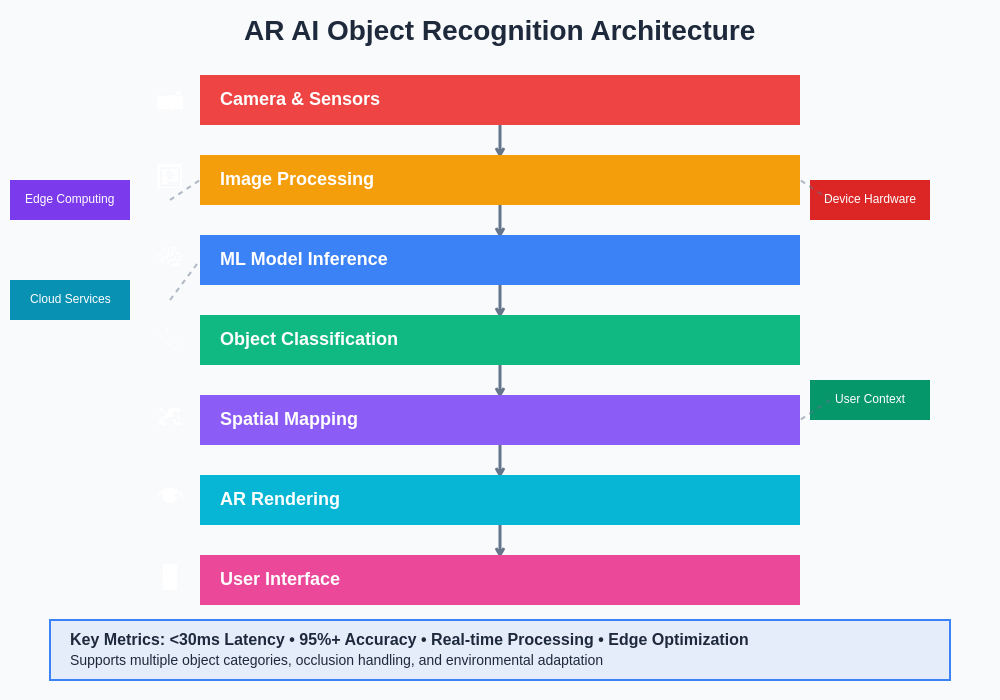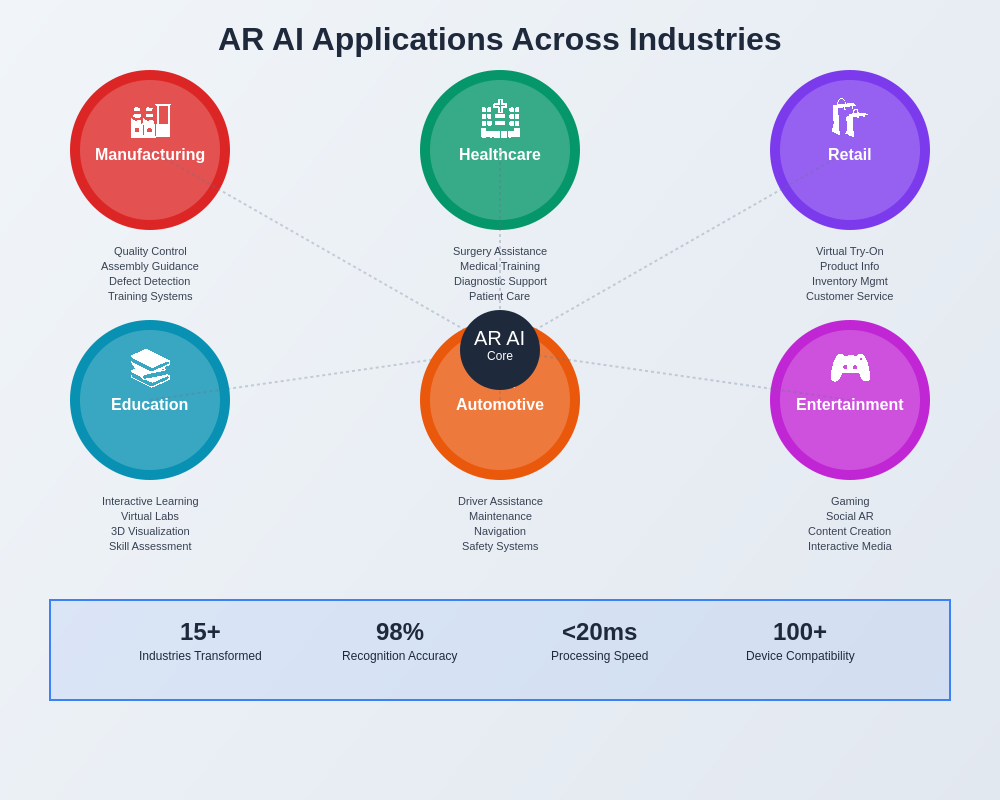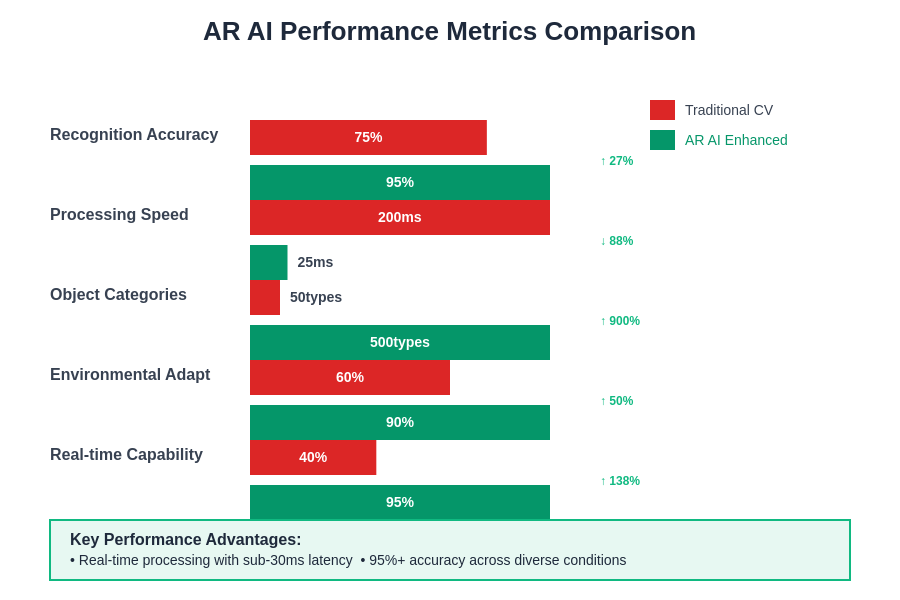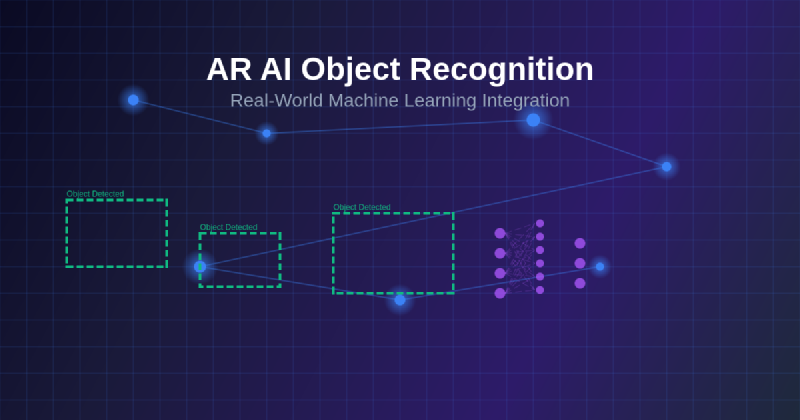The convergence of augmented reality and artificial intelligence has created one of the most transformative technologies of our era, fundamentally changing how we perceive and interact with the physical world around us. AR AI object recognition represents the pinnacle of this technological fusion, enabling real-time identification, analysis, and augmentation of physical objects through sophisticated machine learning algorithms that operate seamlessly within augmented reality environments.
Explore the latest AI trends and developments that are shaping the future of augmented reality and computer vision technologies. The integration of machine learning with AR systems has moved beyond experimental applications to become a cornerstone of modern digital transformation strategies across industries ranging from manufacturing and healthcare to retail and entertainment.
The Foundation of AR AI Object Recognition
The technological foundation underlying AR AI object recognition systems represents a sophisticated orchestration of multiple advanced technologies working in perfect harmony. At its core, this system combines computer vision algorithms, deep learning neural networks, spatial computing capabilities, and real-time processing frameworks to create an intelligent understanding of the physical environment that surpasses traditional computer vision applications.
The process begins with advanced camera systems and sensors that capture high-resolution imagery and depth information about the surrounding environment. This raw sensory data is then processed through multiple layers of machine learning algorithms specifically trained to identify patterns, shapes, textures, and contextual relationships between objects. The integration of spatial awareness allows these systems to understand not just what objects are present, but their precise location, orientation, and relationship to other elements in the three-dimensional space.
Modern AR AI object recognition systems leverage convolutional neural networks that have been trained on massive datasets containing millions of labeled images representing countless variations of objects under different lighting conditions, perspectives, and environmental contexts. These neural networks have developed the ability to recognize objects with remarkable accuracy even when they are partially obscured, viewed from unusual angles, or presented in challenging lighting conditions that would confuse traditional computer vision systems.
Real-Time Processing and Edge Computing Integration
The practical implementation of AR AI object recognition requires sophisticated real-time processing capabilities that can deliver instantaneous results without the latency that would break the immersive experience fundamental to augmented reality applications. This challenge has driven significant innovations in edge computing architectures that bring machine learning inference capabilities directly to mobile devices and AR headsets.
Experience advanced AI capabilities with Claude for developing and optimizing AR AI applications that require sophisticated reasoning and real-time decision making. The evolution of specialized processors, including neural processing units and graphics processing units optimized for machine learning workloads, has made it possible to run complex object recognition algorithms locally on consumer devices without requiring constant connectivity to cloud-based services.
Edge computing integration addresses critical concerns around latency, privacy, and reliability that are essential for AR applications operating in real-world environments. By processing object recognition locally, these systems can maintain consistent performance regardless of network connectivity while ensuring that sensitive visual data remains on the user’s device rather than being transmitted to remote servers for processing.

The architectural complexity of modern AR AI systems requires careful orchestration between multiple processing layers, each optimized for specific aspects of the recognition and augmentation pipeline. This distributed processing approach ensures optimal performance while maintaining the responsiveness essential for compelling augmented reality experiences.
Industrial Applications and Manufacturing Integration
The manufacturing industry has emerged as one of the most significant beneficiaries of AR AI object recognition technology, with applications spanning quality control, assembly guidance, maintenance procedures, and workforce training. These systems can identify components, detect defects, verify assembly procedures, and provide real-time guidance to workers performing complex manufacturing tasks.
In automotive manufacturing environments, AR AI systems can recognize individual components on assembly lines, verify correct installation procedures, and detect potential quality issues before they become costly problems. The technology enables workers to receive visual overlays that highlight specific components, display installation instructions, and provide immediate feedback on assembly accuracy without interrupting the natural flow of manufacturing processes.
Advanced implementations include predictive maintenance systems that can identify wear patterns, detect early signs of equipment failure, and recommend maintenance procedures before critical failures occur. These systems analyze visual information from machinery and equipment to identify subtle changes that indicate potential problems, enabling proactive maintenance strategies that reduce downtime and improve overall operational efficiency.
The precision manufacturing sector has particularly benefited from AR AI object recognition systems that can detect microscopic defects, verify dimensional accuracy, and ensure compliance with strict quality standards. These applications require extraordinary precision and reliability, driving continued innovation in machine learning algorithms specifically optimized for industrial applications.
Healthcare and Medical Applications
Healthcare represents another frontier where AR AI object recognition is creating transformative changes in patient care, medical training, and surgical procedures. These systems can identify medical instruments, recognize anatomical structures, assist with diagnostic procedures, and provide real-time guidance during complex medical interventions.
Surgical applications include systems that can identify surgical instruments, track their location during procedures, and provide surgeons with enhanced visualization of anatomical structures. The technology can overlay critical information directly onto the surgeon’s field of view, including patient vital signs, surgical planning data, and real-time guidance for complex procedures.
Medical training has been revolutionized through AR AI systems that can create interactive learning experiences where students can practice procedures on virtual patients while receiving real-time feedback on their technique and decision-making. These systems can recognize hand movements, identify procedural steps, and provide immediate corrections or suggestions for improvement.
Diagnostic applications include systems that can assist radiologists in identifying abnormalities in medical imaging, help pathologists recognize cellular structures and anomalies, and support general practitioners in performing preliminary assessments of patient conditions through visual analysis of symptoms and conditions.
Retail and Consumer Experience Transformation
The retail industry has embraced AR AI object recognition as a powerful tool for enhancing customer experiences, streamlining operations, and creating new forms of interactive shopping. These systems can identify products, provide detailed information about items, enable virtual try-on experiences, and facilitate seamless checkout processes.
Discover comprehensive AI research capabilities with Perplexity for staying informed about the latest developments in retail technology and consumer experience innovations. Fashion retailers have implemented AR AI systems that can recognize clothing items and accessories, enabling customers to virtually try on products, visualize how items will look together, and receive personalized styling recommendations based on their preferences and body characteristics.
Grocery and consumer goods retailers have developed systems that can identify products through visual recognition, provide nutritional information, suggest complementary items, and enable customers to complete purchases through simple gesture recognition. These applications eliminate the need for traditional barcode scanning while providing rich, contextual information about products in real-time.
Inventory management has been transformed through AR AI systems that can automatically identify and track products throughout the supply chain, detect when items are running low, and optimize product placement based on customer behavior patterns and purchasing trends.

The diverse applications of AR AI object recognition span multiple industries and use cases, each requiring specialized optimization and training to achieve the accuracy and reliability demanded by real-world operating conditions.
Technical Challenges and Solution Approaches
The implementation of AR AI object recognition systems faces numerous technical challenges that require innovative solutions and continuous technological advancement. Lighting variations present one of the most significant challenges, as objects can appear dramatically different under various lighting conditions, requiring robust algorithms that can maintain accuracy across diverse environmental conditions.
Occlusion handling represents another critical challenge where objects may be partially hidden behind other items or viewed from angles that obscure important identifying features. Advanced machine learning models have been developed that can infer the complete structure of objects based on partial visual information, enabling recognition even when significant portions of objects are not visible.
Real-time performance requirements demand optimization strategies that balance recognition accuracy with processing speed, often requiring innovative approaches to model compression, quantization, and specialized hardware acceleration. The development of efficient neural network architectures specifically designed for mobile and embedded processing has been crucial for achieving practical deployment of these systems.
Scale and perspective variations present ongoing challenges as objects may appear at different sizes and from various viewing angles within AR environments. Modern systems employ multi-scale detection approaches and perspective-invariant feature extraction methods that enable consistent recognition regardless of viewing conditions.
Machine Learning Model Training and Optimization
The development of effective AR AI object recognition systems requires sophisticated approaches to machine learning model training that account for the unique requirements and constraints of augmented reality applications. Training datasets must encompass extraordinary diversity in terms of lighting conditions, viewing angles, background environments, and object variations to ensure robust performance in real-world scenarios.
Transfer learning techniques have become essential for developing specialized object recognition models that can leverage pre-trained neural networks while adapting to specific application requirements. This approach significantly reduces the computational resources and time required to develop effective recognition systems while maintaining high accuracy for specialized use cases.
Data augmentation strategies play a crucial role in expanding training datasets through synthetic generation of variations that might not be readily available in collected data. These techniques include geometric transformations, lighting adjustments, background substitution, and occlusion simulation that help models develop robustness to real-world variations.
Continuous learning systems have emerged as a critical capability for AR AI applications that must adapt to changing environments, new object types, and evolving user requirements. These systems can update their recognition capabilities based on real-world usage patterns while maintaining performance on previously learned object categories.
Privacy and Security Considerations
The deployment of AR AI object recognition systems raises important privacy and security considerations that must be carefully addressed to ensure user trust and regulatory compliance. These systems process visual information about users’ environments, potentially capturing sensitive information about personal spaces, possessions, and activities.
Edge computing architectures provide significant privacy advantages by ensuring that visual data processing occurs locally on user devices rather than being transmitted to remote servers. This approach minimizes the risk of unauthorized access to personal visual information while maintaining the performance characteristics essential for AR applications.
Secure model deployment strategies ensure that machine learning models themselves are protected against tampering, reverse engineering, and unauthorized modification. These approaches include model encryption, secure execution environments, and integrity verification systems that maintain the authenticity of AI processing capabilities.
Data minimization principles guide the development of systems that collect and process only the visual information necessary for their intended functionality, avoiding unnecessary capture or storage of sensitive environmental data that could compromise user privacy.
Performance Optimization and Hardware Acceleration
The demanding computational requirements of AR AI object recognition have driven significant innovations in hardware acceleration and performance optimization strategies. Graphics processing units have been optimized specifically for machine learning workloads, providing parallel processing capabilities that dramatically improve inference speed for computer vision algorithms.
Specialized neural processing units represent dedicated hardware designed specifically for machine learning operations, offering exceptional efficiency for the matrix operations fundamental to deep learning algorithms. These processors enable complex object recognition models to run efficiently on mobile devices and embedded systems.
Model optimization techniques including quantization, pruning, and knowledge distillation have been developed to reduce the computational requirements of machine learning models without significantly compromising recognition accuracy. These approaches are essential for deploying sophisticated AI capabilities on resource-constrained devices.

The optimization of AR AI systems requires careful balance between recognition accuracy, processing speed, power consumption, and hardware requirements to achieve practical deployment across diverse device platforms and use cases.
Integration with Existing Enterprise Systems
The successful deployment of AR AI object recognition in enterprise environments requires seamless integration with existing business systems, databases, and workflows. Enterprise resource planning systems must be connected to AR applications to provide real-time access to product information, inventory data, and operational procedures.
Application programming interface design plays a crucial role in enabling AR AI systems to communicate effectively with existing enterprise infrastructure while maintaining security, performance, and scalability requirements. These interfaces must support real-time data exchange while accommodating the unique requirements of augmented reality applications.
Change management strategies are essential for successful enterprise adoption of AR AI technologies, requiring comprehensive training programs, workflow redesign, and cultural adaptation to maximize the benefits of these advanced capabilities. Organizations must develop expertise in managing AI-powered systems while maintaining operational effectiveness.
Legacy system integration presents ongoing challenges that require innovative solutions for connecting modern AR AI capabilities with existing enterprise infrastructure that may not have been designed for real-time visual processing applications.
Future Developments and Emerging Trends
The future of AR AI object recognition promises continued advancement in accuracy, capability, and application scope as underlying technologies continue to evolve rapidly. Advances in neural network architectures, including transformer models and attention mechanisms, are expected to improve recognition accuracy while reducing computational requirements.
Multi-modal integration represents an emerging trend where AR AI systems combine visual recognition with audio processing, spatial sensing, and environmental context to create more comprehensive understanding of user environments and intentions. These systems will be capable of more sophisticated reasoning and decision-making based on multiple sources of sensory information.
Federated learning approaches are being developed that enable AR AI systems to improve their recognition capabilities through collaborative learning while maintaining privacy and security requirements. These systems can share learning insights without exchanging sensitive visual data, enabling continuous improvement across distributed deployments.
The emergence of 5G and edge computing infrastructure will enable new categories of AR AI applications that require high-bandwidth, low-latency connectivity to cloud-based processing resources while maintaining the responsiveness essential for augmented reality experiences.
Industry Standards and Regulatory Considerations
The development of industry standards for AR AI object recognition systems is crucial for ensuring interoperability, security, and reliability across different platforms and applications. Standards organizations are working to establish common frameworks for data formats, processing protocols, and performance metrics that enable consistent implementation across diverse technology ecosystems.
Regulatory considerations increasingly influence the design and deployment of AR AI systems, particularly in industries such as healthcare, automotive, and aviation where safety and reliability are paramount concerns. Compliance frameworks must address accuracy requirements, testing protocols, and validation procedures that ensure systems meet regulatory standards.
Ethical guidelines for AR AI development address concerns about bias, fairness, and transparency in machine learning algorithms that may impact user experiences and decision-making processes. These guidelines emphasize the importance of diverse training data, algorithmic auditing, and transparent reporting of system capabilities and limitations.
International coordination efforts are working to harmonize regulatory approaches across different jurisdictions while recognizing the global nature of AR AI technology development and deployment.
The transformation brought about by AR AI object recognition represents a fundamental shift in how we interact with technology and perceive the world around us. As these systems continue to evolve and mature, they promise to unlock new possibilities for human-computer interaction while addressing some of the most complex challenges facing modern industries and society.
The convergence of augmented reality and artificial intelligence through sophisticated object recognition capabilities creates opportunities for innovation that extend far beyond current applications, promising a future where digital intelligence seamlessly enhances our understanding and interaction with the physical world in ways that were previously unimaginable.
Disclaimer
This article is for informational purposes only and does not constitute professional advice. The views expressed are based on current understanding of AR and AI technologies and their applications. Readers should conduct their own research and consider their specific requirements when implementing AR AI object recognition systems. The effectiveness and suitability of these technologies may vary depending on specific use cases, regulatory requirements, and technical constraints.
